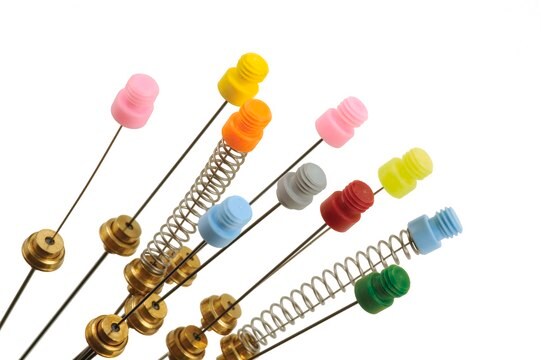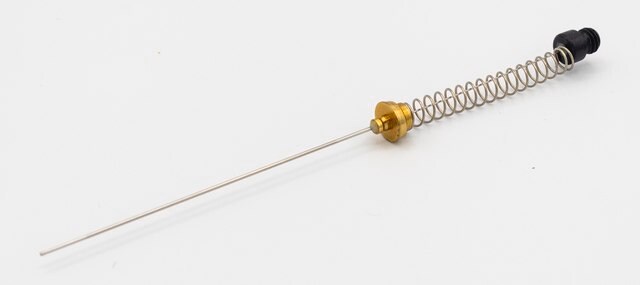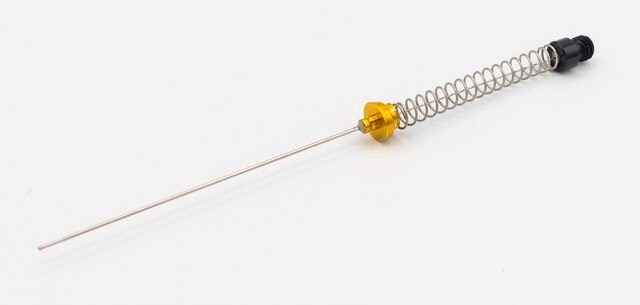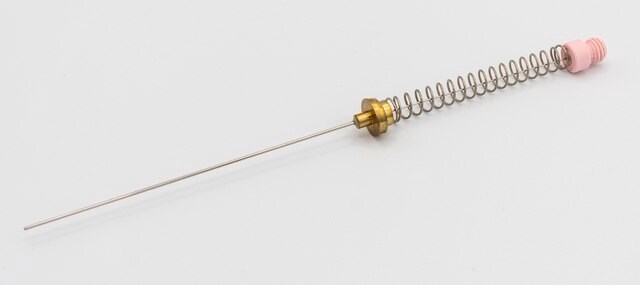Kluczowe dokumenty
57318
SPME fiber assembly Carboxen/Polydimethylsiloxane (CAR/PDMS)
df 75 μm(CAR/PDMS, for use with manual holder, needle size 24 ga
About This Item
Polecane produkty
Materiały
fused silica fiber
plain black hub
Poziom jakości
rozmiar igły
24 ga
opakowanie
pkg of 3 ea
charakterystyka ekologicznej alternatywy
Waste Prevention
Safer Solvents and Auxiliaries
Learn more about the Principles of Green Chemistry.
sustainability
Greener Alternative Product
df
75 μm (CAR/PDMS)
metody
solid phase microextraction (SPME): suitable
dł. włókna
1 cm
grupa aktywna macierzy
CAR/PDMS coating
Zastosowanie
food and beverages
kompatybilność
(For gasses and low molecular weight compounds (MW 30 - 225).)
for use with manual holder
kategoria ekologicznej alternatywy
Szukasz podobnych produktów? Odwiedź Przewodnik dotyczący porównywania produktów
Opis ogólny
Zastosowanie
- to extract volatiles from headspace vial of cheese samples.
- to measure dimethyl sulphide concentrations of Ulva lactuca.
- in determination of 2-Heptanone concentrations.
Przypis
Zastosowanie
Kod klasy składowania
11 - Combustible Solids
Klasa zagrożenia wodnego (WGK)
WGK 2
Wybierz jedną z najnowszych wersji:
Certyfikaty analizy (CoA)
Przepraszamy, ale COA dla tego produktu nie jest aktualnie dostępny online.
Proszę o kontakt, jeśli potrzebna jest pomoc Obsługa Klienta
Masz już ten produkt?
Dokumenty związane z niedawno zakupionymi produktami zostały zamieszczone w Bibliotece dokumentów.
Klienci oglądali również te produkty
Protokoły
This report demonstrates the potential of solid phase microextraction as a clinical research tool for the extraction of VOCs associated with lung cancer from human breath.
The use of solid phase microextraction (SPME) allowed for the straightforward, fast, sensitive, and accurate GC/MS determination of the residual solvent content of spiked and unspiked samples of hemp extract.
Separation of 4-Methyl-2-pentanone; Dimethyl disulfide; Hexanal; 3-Methylpentane; Acetone
Separation of Sulfur dioxide; Hydrogen sulfide; Carbonyl sulfide; Methanethiol; Ethanethiol; Dimethyl disulfide; Carbon disulfide
Chromatograms
suitable for GC, application for SPMEsuitable for GC, application for SPMEsuitable for GC, application for SPMEsuitable for GC, application for SPMEPokaż więcejNasz zespół naukowców ma doświadczenie we wszystkich obszarach badań, w tym w naukach przyrodniczych, materiałoznawstwie, syntezie chemicznej, chromatografii, analityce i wielu innych dziedzinach.
Skontaktuj się z zespołem ds. pomocy technicznej








